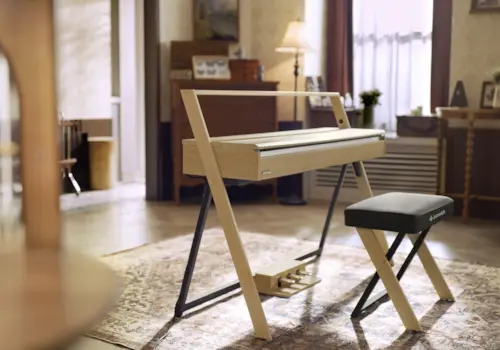Melanie Spanswick gives a further five top tips on how to learn a brand-new piece
Why not use the skills you learn here to enter the Pianist 2023 Amateur Piano Competition? Two lucky winners will receive a Yamaha piano worth up to £10,000. Full details can be found here.
In my last article, How to learn a new piano piece: Part 1, I offered several suggestions and practice ideas as you start learning a new piece. Part 2 continues this important process, examining various practice techniques and tools which will hopefully be beneficial as you now move into more detailed work.
1. Separate hand practice
Once you have successfully ‘chunked’ your piece (or ‘blocked it out’) as per suggestions 4 and 5 of Part 1, separate hand work can be helpful. However, this should be made much easier by the fact that you’ve already ascertained note, fingering, and hand positions by playing the piece as a series of chords.
Play note patterns without a rhythm at first, focusing on finger and hand positions, and on producing a full tone. Once you are satisfied, add a metronome, and work slowly in order to develop rhythmic security with a pulse.
2. Hands together
Now put your hands together and employ a very slow pulse so that you’re able to negotiate each movement and hand position change easily without any tightness in your upper body; it’s too easy to play without thinking about whether the body feels relaxed, that is, without any tension.
This aspect is crucial, especially as you work to increase the speed. A loose, flexible wrist and arm should be able to guide the hand into place, but the fingers must always remain firm.
3. Deep practice
Many will know that I consider this tool one of the most essential of all. Whilst playing slowly, focus on the sound and how each key is approached. Observe fingers as you play and aim to employ the finger tips on every single note, allowing each one to delve deeply into the key bed producing a large but rich tone.
It helps if the wrist is loose and ‘rotating’ between notes (that is, moving in a circular fashion), supporting the fingers in their quest for a powerful sonority, and always with the help of arm weight.
4. Rhythmic and tonal evenness
Keep working slowly and employ a metronome, sub-dividing beats; for example, if there are semi-quavers in your piece, set a semi-quaver pulse and be sure that there is a ‘tick’ to every note.
‘Sit’ on the slow pulse and aim to play each key heavily, ignoring the dynamic markings and phrasings etc. By using a powerful sound on every note as you play slowly, you will eventually develop a firm sense of pulse and evenness of touch. It’s vital, however, to keep the wrist, hand and arm loose as you practice this technique.
5. Add speed
Now you have practised in this manner for a while and are secure with notes, fingerings, rhythm and position changes, slowly increase the speed. As you do this, you can start to ‘lighten’ the touch – using a heavy touch is just a practice tool, and now it’s time to return to adding all the dynamics and phrase markings within the score.
In Part 3, we will look at musical markings and how they can be implemented into your interpretation.









